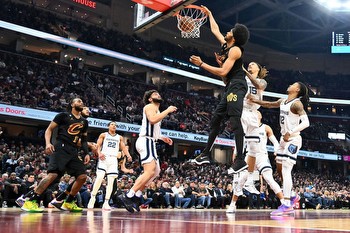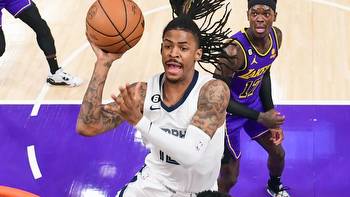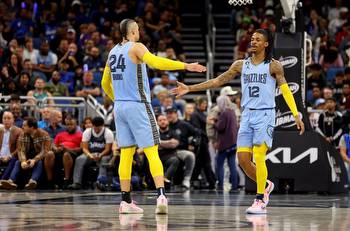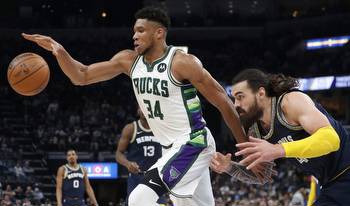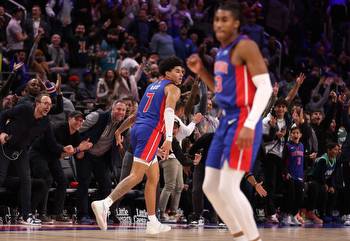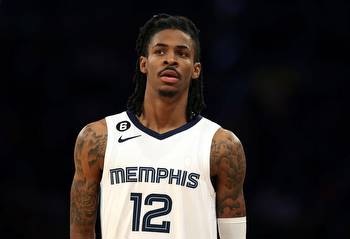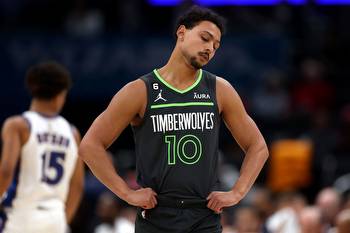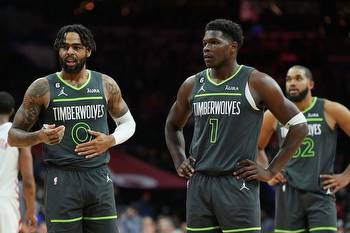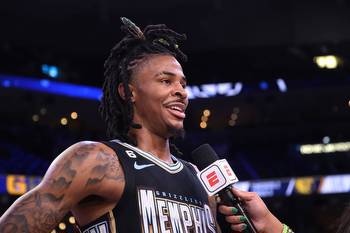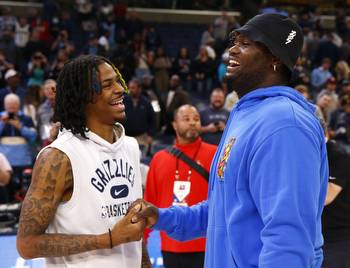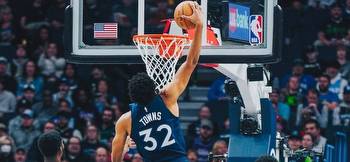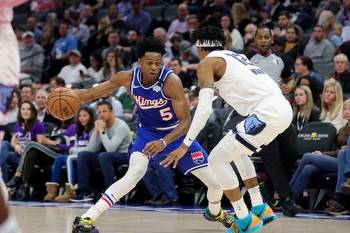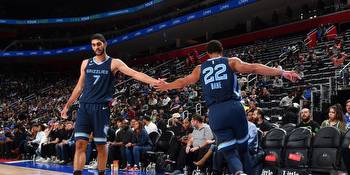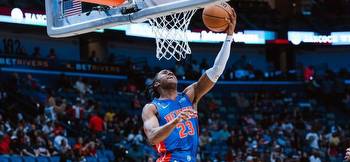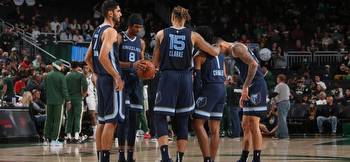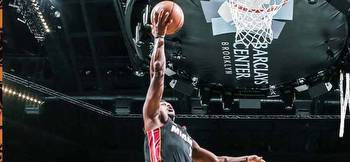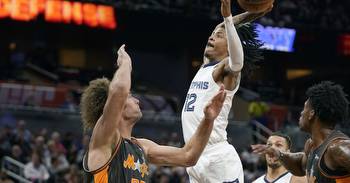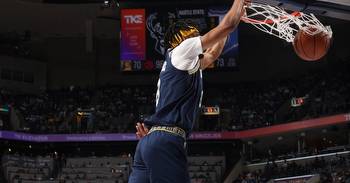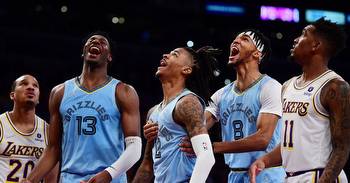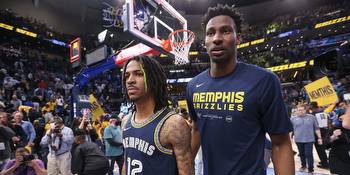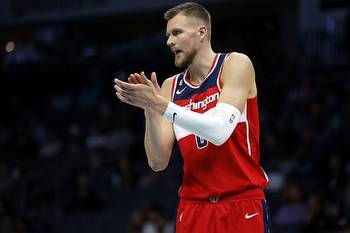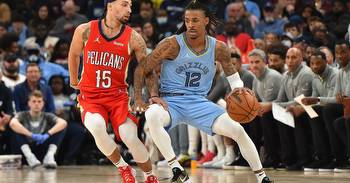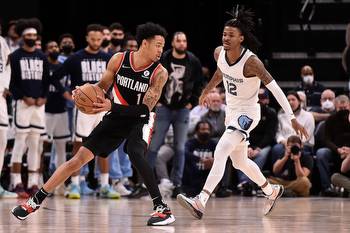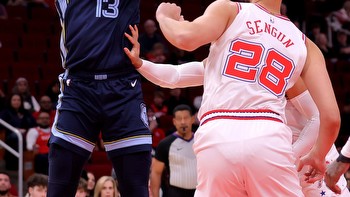5 lineups to watch for the Memphis Grizzlies to use over 2022-23 season
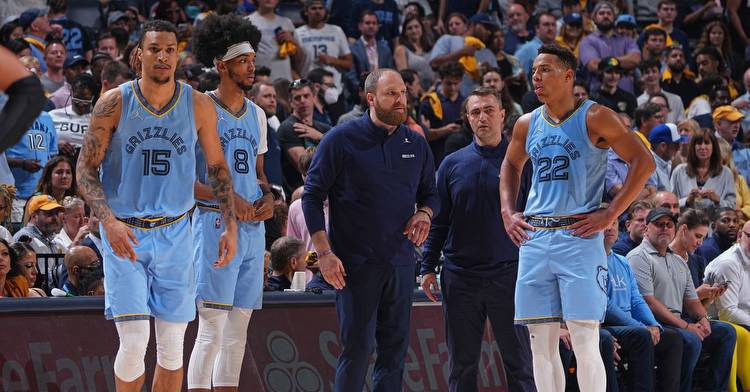
The Memphis Grizzlies didn’t do anything too drastic this offseason to the point where we are going to see extreme differences in the rotation and in the system next season. However, there are various factors that lead to more exposure to intriguing lineups, or to experimentation on new ones.
The departures of De’Anthony Melton and Kyle Anderson are going to open up opportunities for young players like Jake LaRavia, Santi Aldama, Xavier Tillman, or David Roddy. It’s fair to assume John Konchar will be the backup 2-guard on opening night. Dillon Brooks missed 50 regular-season games, and Ja Morant was out for 25, and a lot of the times they didn’t get to share the floor together. For reference, they only shared the floor for 915 possessions through last year’s regular season and postseason — compared to 3,553 and 3,431 in the 2020-21 and 2019-20 campaigns, per Cleaning the Glass.
Considering these changes, along with Jaren Jackson Jr. presumably missing a chunk of time at the start of the season, Taylor Jenkins will likely use training camp, preseason, and the first few weeks of the year to tinker with his rotations to unlock the right combinations. With that said, there are several lineups I’d like to see that we didn't get to see a whole lot of last season — as well as ones involving a few of the rookies.
Criteria: <300 non garbage time possessions, per Cleaning the Glass
The “Large Sample, but not enough Sample” lineup
- Ja Morant
- Desmond Bane
- Dillon Brooks
- Jaren Jackson Jr.
- Steven Adams
Last season: 232 possessions, +25.1 NET Rating, 120.3 points scored per 100 possessions, 95.2 points surrendered per 100 possessions
The Memphis Grizzlies only had their primary starting lineup for 11 games this past season, and the results were perplexing. On one hand, they absolutely wrecked their opponents with this unit — ranking in the 95th percentile in point differential per 100 possessions (+25.1) and in the 96th percentile in defensive rating (95.2). However, the Grizzlies went 4-7 in the games this groups started together — excluding the Game 2 victory against the Minnesota Timberwolves where Steven Adams played 3 minutes.
The record probably boils down to lineup staggering more than the efficiency of this lineup, especially since the numbers show these 5 together yield berserk production. Given their elite metrics together, I want to see if more time together — and with more rhythm for the lineups they stagger with — parlays into a better win percentage.
There’s framework for success.
For starters, the lineup around Ja Morant is huge. Desmond Bane and Dillon Brooks have great size on the wing, and they possess the physicality to bother their opponents on both sides of the ball. Jaren Jackson and Steven Adams represent a two-big duo where one of them projects as the modern, perimeter-oriented forward, while the other is built like an ox and does the dirty work of screening and rebounding.
Offensively, Steven Adams caters to the strengths of the Grizzlies’ perimeter players. As one of the best screeners in the league, he’s the perfect pairing for a driving dynamite like Ja Morant. Desmond Bane (0.99 PPP) and Dillon Brooks (0.97 PPP) both grade out as “A-” to “A” level players off hand-off’s, per The B-Ball Index. Having a big man that’s proficient in dribble hand-off’s certainly leads to good results there.
In addition, this unit consists of 4 players that averaged at least 2.5 assists per game, so deploying a lineup with this many solid playmakers generates offensive variability — allowing its primary creators to play off the ball. Case in point, Bane and Morant both possess “A+” grades off cuts, per The B-Ball Index.
Defensively is where this unit shines. Jackson Jr. and Brooks are both elite in their roles — switch-ability and rim protection for the former, and point-of-attack defense for the latter. Adams serves as the drop defender, grading out in the 99th percentile in screener rim defense, per The B-Ball Index. And whenever Jackson recovers on the help side, the Grizzlies have an imposing amount of size between the two big men.Bane has also grown into a secondary stopper role, allowing Morant to hide or gamble on defense. This formula allows the Grizzlies to generate stops at an elite level.
This lineup has shown it can be a dominant, efficient starting lineup. However, we only saw it in 11 games this past season, and the winning results were mixed. So in this campaign, it’s going to be interesting to see if the coaching staff can unlock the right combinations around this unit to capture its full potential.
The Closing Lineup
- Ja Morant
- Desmond Bane
- Dillon Brooks
- Brandon Clarke
- Jaren Jackson Jr.
Last season: 13(!) possessions, +46.2 NET Rating, 107.7 points scored per 100 possessions, 61.5 points surrendered per 100 possessions
The right closing lineup usually depends on the flow of the game — who’s cooking, who’s struggling, and what’s the matchup. However, you could argue these players are the Grizzlies’ best 5 guys.
Unfortunately, we didn’t get to see this unit together much because of injuries. However, we saw a decent sample in the postseason, and it was marvelous.
- 87 possessions, +35.6 NET Rating, 137.9 points scored per 100 possessions, 102.3 points surrendered per 100 possessions
They were elite on both sides of the ball — 100th percentile in Offensive Rating, and 97th percentile in Defensive Rating. This sample came against high-powered systems in a postseason setting. It makes this lineup incredibly fascinating.
It’s basically a turbo-charged version of the starting lineup.
Instead of brute force from Adams, the Grizzlies add more athleticism and positional versatility with Brandon Clarke. Offensively, they lose screening acumen but add more vertical pop off the roll. In addition, he’s still very good at crashing the offensive glass for second-chance points — 93rd percentile in offensive rebounds per game (2.1) and in put-backs per 75 possessions (2.7), per The B-Ball Index. Defensively, it shifts Jackson to serving in a drop role, but it also gives the Grizzlies two front-court players that can switch out onto the perimeter. With this defensive dynamic — as well as the size and defensive prowess on the wings — it allows them to get stops and ignite transition offense, a bread and butter for this unit.
The biggest component in this lineup is it enables Ja Morant’s playmaking and scoring in crunch-time situations. More often than not, most offensive sets in crucial situations will predicate around Morant driving downhill — whether it’s in the pick-and-roll, or in pure isolation instances. In the pick-and-roll, he has two big men that can serve as rollers or poppers in Clarke and Jackson, and both are potent weapons in those spots. Off the drive, he has two wing scorers that can play off of him and hit catch-and-shoot 3’s. Because of the weapons around him, it almost serves as a “pick your poison” where you either have to play to Morant’s playmaking or his scoring efficiency in the paint.
This 5-man lineup plays with versatility and pace, while also flashing the potential to be the Grizzlies’ “Death Lineup.” These 5 players may share the floor together in crucial stretches quite a bit.
The 2 stagger lineups
- Tyus Jones
- Dillon Brooks
- Ziaire Williams
- Brandon Clarke
- Jaren Jackson Jr.
Last season: 37 possessions, +5.6 NET Rating, 100 points scored per 100 possessions, 94.4 points surrendered per 100 possessions
It’s a common conception that Dillon Brooks is best served as a 6th man. He has solidified himself as a starter, and it’s tricky moving the best perimeter stopper to the 2nd unit.
So why not stagger him in lineups where he can take on more “6th man” responsibilities, as opposed to more of the 3-and-D role within the starting lineup?
Granted, in this unit, he’s not above Jackson in the pecking order. However, I have Jackson in this lineup, since they should have 2 of Ja-Jaren-Bane-Brooks on the floor at all times — the only 2 players that it’d be fine to see run without the other 3 are Ja and maybe Bane. In this instance, it could empower Jackson as an offensive weapon as well, but it could be an opportunity for Brooks to lean into his creation tendencies.
There is still a good offensive structure beyond gunning shots. The pick-and-roll with Tyus Jones and Brandon Clarke has been a key facet in the team’s bench success the past three seasons. Ziaire Williams is a corner weapon that could either knock down 3’s or cut baseline for alley oops. Jaren Jackson Jr. can be a featured scorer as well.
The defense, aforementioned, is predicated around versatility. Tyus Jones is a slightly better defender than Morant right now. Ziaire Williams also showed interesting flashes on that side of the ball, so seeing him in lineups with Brooks and Jackson would be fascinating.
It wouldn’t surprise me if this unit is a commonly staggered lineup next season.
- Ja Morant
- Desmond Bane
- Ziaire Williams
- Jake LaRavia
- Jaren Jackson Jr.
This lineup is a paradise offensively, and you could arguably slot Jones instead of Morant too, and I’d still be incredibly intrigued.
It’s a shooter’s dream to play next to passers that can hit them in their spots, and it’s also tantalizing for elite drivers to operate with this much spacing.
I mean just imagine real quick...
Ja Morant is finding his offense with Bane floating off the ball, LaRavia and Williams in the corner’s, and Jackson roaming around the perimeter or the post. All that space opening up.
It’s sweet to think about.
I’d slightly be worried about the defense between Morant and LaRavia on the perimeter, and the rebounding could be a sore spot. Regardless, the offensive upside is hard to ignore.
Let’s Get Funky
- Tyus Jones
- Desmond Bane
- John Konchar
- David Roddy
- Steven Adams
This lineup falls under this category, because I need to see Desmond Bane and David Roddy in the same lineup — for the basketball/football cross-references. Slot Steven Adams in there as the enforcer. Then, get John Konchar in there for his positional rebounding and spot-up shooting. Let me see this just for a little bit.
This lineup could thrive in transition with Adams starting the break with rebounding, either Bane or Jones initiating the offense, and Konchar and Roddy are running the lanes. It could also empower Desmond Bane to be the go-to scorer in this lineup.
It’s easy to suspect defensive woes from this unit, which is one of the many reasons this lineup will see very limited minutes. However, it’s a funky lineup that I just want to see run a couple stretches.
Honorable Mention
- Ja Morant, Desmond Bane, Dillon Brooks, Santi Aldama, Steven Adams.
With Jaren Jackson out for the start of the season, many people will analyze who should be slotted into his role as the starting 4. I’m watching for Santi Aldama in this spot. It helps the Grizzlies maintain the size it seeks in the starting frontcourt, and it could help him tap into more of a complementary role offensively as well. The fit there will become more clear in preseason.
- Tyus Jones, John Konchar, Ziaire Williams, Dillon Brooks, Brandon Clarke.
I’m a massive advocate of small-ball basketball, and the Grizzlies showed their ability to succeed even when scaled down to Brooks and Clarke running the 4 and 5. Having Konchar in there gives them another positional rebounder to alleviate the rebounding concerns. They shouldn’t go small too often, but this unit is an interesting one if there’s an occasion to size down a bit.
Taylor Jenkins has shown the willingness to experiment with his lineup combinations, and with the factors arising at the start of the season, he’ll have the opportunity to do so very quickly. As a result, we’ll see some lineups that have had little-to-no time together.
With key rotation players out of the mix, and with preseason injuries, could Jenkins continue to find winning combinations to sustain the Grizzlies’ momentum? We’re about to find out.
Google Podcasts, Apple Podcasts, Stitcher, Spotify, and IHeart. Follow Grizzly Bear Blues on and Instagram.

